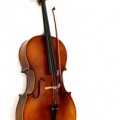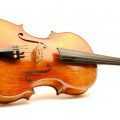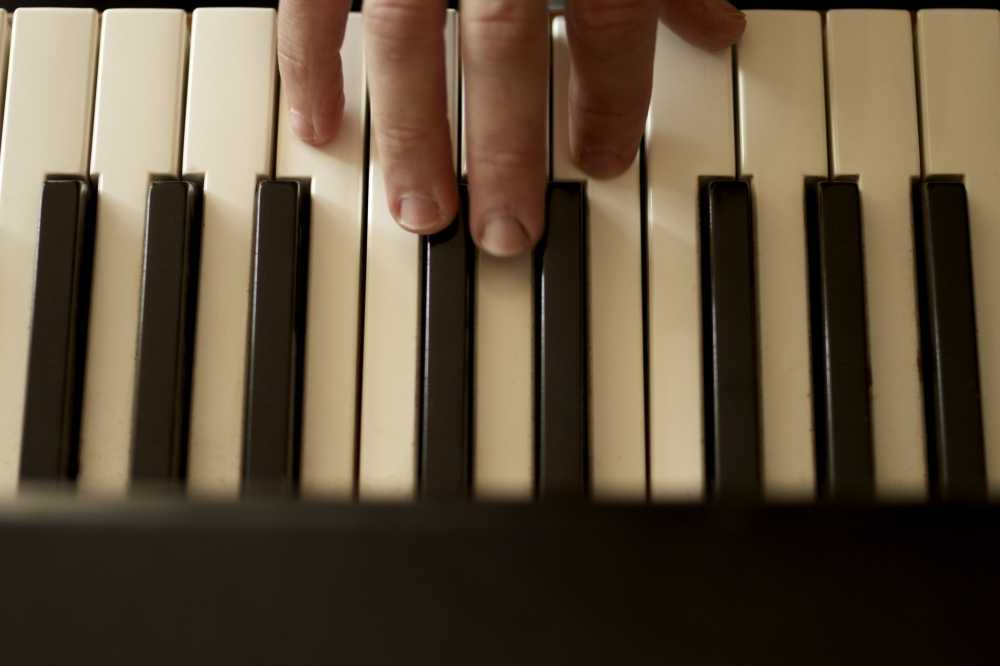By now, if you or your child have been studying viola for any amount of time, you are probably familiar with the unfortunate identity crisis that violists face on a regular basis. You are used to 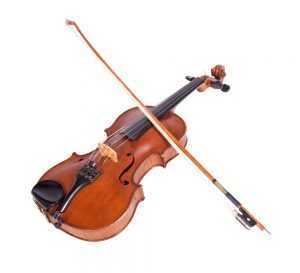 fielding questions and comments from eager aspiring music appreciators: What is a viola? That’s like the big violin, right? Is that the one you play sitting down? Most likely, you have faced this confusion firsthand. While you now possess the knowledge to set the record straight, there are several important factors unique to this much beloved instrument that are important to consider when buying a viola that is right for you.
fielding questions and comments from eager aspiring music appreciators: What is a viola? That’s like the big violin, right? Is that the one you play sitting down? Most likely, you have faced this confusion firsthand. While you now possess the knowledge to set the record straight, there are several important factors unique to this much beloved instrument that are important to consider when buying a viola that is right for you.
The Mythical Full-Sized Viola
Several weeks ago, as I was unpacking my 16.5” viola in front of my beginning third grade class, one wide-eyed violist asked with awe, “Is that a full-sized?” This is a trick question of sorts because there is actually no such thing as a full-sized viola! Unlike the longstanding tradition behind the modern violin and cello that we know today, the process of viola making has never been completely standardized. It is a simple matter of practicality: to build a viola that replicates the acoustically perfected proportions of a violin or cello would result in an instrument with an approximate body length of 22 inches which, for the record, would virtually be impossible to play. Whereas violin and cello sizes are measured in fractions (1/2, 3/4, 4/4, etc.) that relate to the full-sized instrument, violas are categorized by the length of their bodies, measured in inches. Since a true full-sized viola with ideal proportions matching the range of the instrument would simply be too big to play, the instruments we are left with to choose from are all acoustically imperfect. For me, this makes the viola the most human member of the string family.
Over the years, makers have experimented with different proportions to optimize the instrument’s potential, searching for a balance between sound, resonance, and playability. For instance, a bigger viola typically has a better projecting sound but will be harder to play. Likewise, a small viola will allow ease of facility on the instrument but will often be lacking in sound quality. While we can still dream of the mythical full-sized viola—the unicorn of the string family—in all of its resonant glory, when it comes down to buying a viola, you should be aware of the compromises viola makers have made to produce the instruments you will be considering.
Not Every Viola is Created Equal
 Consequently, with so much experimentation among luthiers in constructing the optimal instrument, there is considerable variation among violas. Even two violas of the same body length can vary significantly. To clarify, at this point I am speaking purely of major physical differences in construction, not of the character and sound profile of each instrument. The latter are variations that occur throughout the entire string family, as makers can influence the sound of their instruments by altering materials and process, giving each violin, viola, cello, and bass its unique voice.
Consequently, with so much experimentation among luthiers in constructing the optimal instrument, there is considerable variation among violas. Even two violas of the same body length can vary significantly. To clarify, at this point I am speaking purely of major physical differences in construction, not of the character and sound profile of each instrument. The latter are variations that occur throughout the entire string family, as makers can influence the sound of their instruments by altering materials and process, giving each violin, viola, cello, and bass its unique voice.
From a practical perspective, the most critical and perhaps overlooked difference to be aware of when buying a viola is the potential difference in string length. This is the measurement taken along the finger board, stretching from the nut to the bridge. This distance is of equal importance to the actual size classification of the instrument because it alone is the factor that determines finger placement. In other words, the string length can have a significant impact on the playability of a viola. This makes perfect sense when you consider that a shorter string length will require less extension of the hand, making the viola easier to play. The important thing to note is that two violas of the same body length might have completely different string lengths. If you are someone with smaller hands, a bigger viola with a shorter string length is very desirable because you will not be forced to sacrifice sound for playability.
In the Shop
There are a lot of violas out there, and as you prepare to shop, it is important to know what options you have to the maximize the value and quality of an instrument within your budget. For young beginning students, a basic entry-level instrument will be adequate. If the student is still growing, the instrument will need to be exchanged on a fairly regular basis so it is better to wait until a student is full-grown to make a bigger investment. However, if your student has started with a basic viola from their school or a rental company, it may be a good time to start looking at intermediate student instruments. Here is rough breakdown in price points for violas on the market today:
| $0-$500 | Beginning |
| $500-$2,000 | Intermediate |
| $2,000-$10,000 | Advanced |
| $10,000+ | Professional |
The least expensive instruments available are entry level factory-made violas from China. These instruments can be improved through a proper setup by a professional at your local violin shop.  Some improvements include upgrading the bridge, strings, and type of bow. These amendments can ensure your beginning instrument is soundings its best.
Some improvements include upgrading the bridge, strings, and type of bow. These amendments can ensure your beginning instrument is soundings its best.
In general, the increased pricing tiers represent an increase in the quality of materials and intensity of workmanship. In intermediate instruments, you will already see greater attention to detail in craftsmanship and higher quality timber. This results in an increased range of expressive sound, ideal for students who are continuing to advance their skills beyond the basics. As musicians, the instruments we play shape our learning, so it is important for advancing students to have access to better instruments as they progress.
When buying a viola avoid buying an instrument from an online retailer such as eBay or Amazon. It is preferable to shop for instruments in person. Most any music store or rental company will sell beginning level instruments, but if you are looking for something more advanced, you will most likely have to visit a violin shop; your teacher should be able to refer you to local retailers. Most violin shops will let you take instruments out on trial periods before you make a final decision. Be sure to try several out and play them for your teacher, if possible, for feedback.
Investing in Inspiration
Buying a viola is a big decision; remember that you are making both a financial and educational investment. Upper level intermediate violas and beyond, if well taken care of, actually appreciate in value. When it is time to upgrade to a new size or quality of instrument, the shop where you purchased your viola will deduct the increased trade-in value from the price of your new viola. Just like when you purchase a car or house, you might want to consider adding your new instrument to an insurance policy to protect your investment.
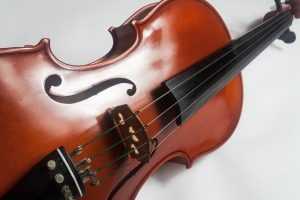
While buying a viola is certainly a financial commitment, it also is an investment in a student’s education. As I mentioned before, our learning is shaped by the instruments on which we play. A better instrument can open new doors for students and allow them to develop the skills necessary to achieve their full musical potential. It is my hope that every violist finds an instrument that inspires them. Happy shopping!

